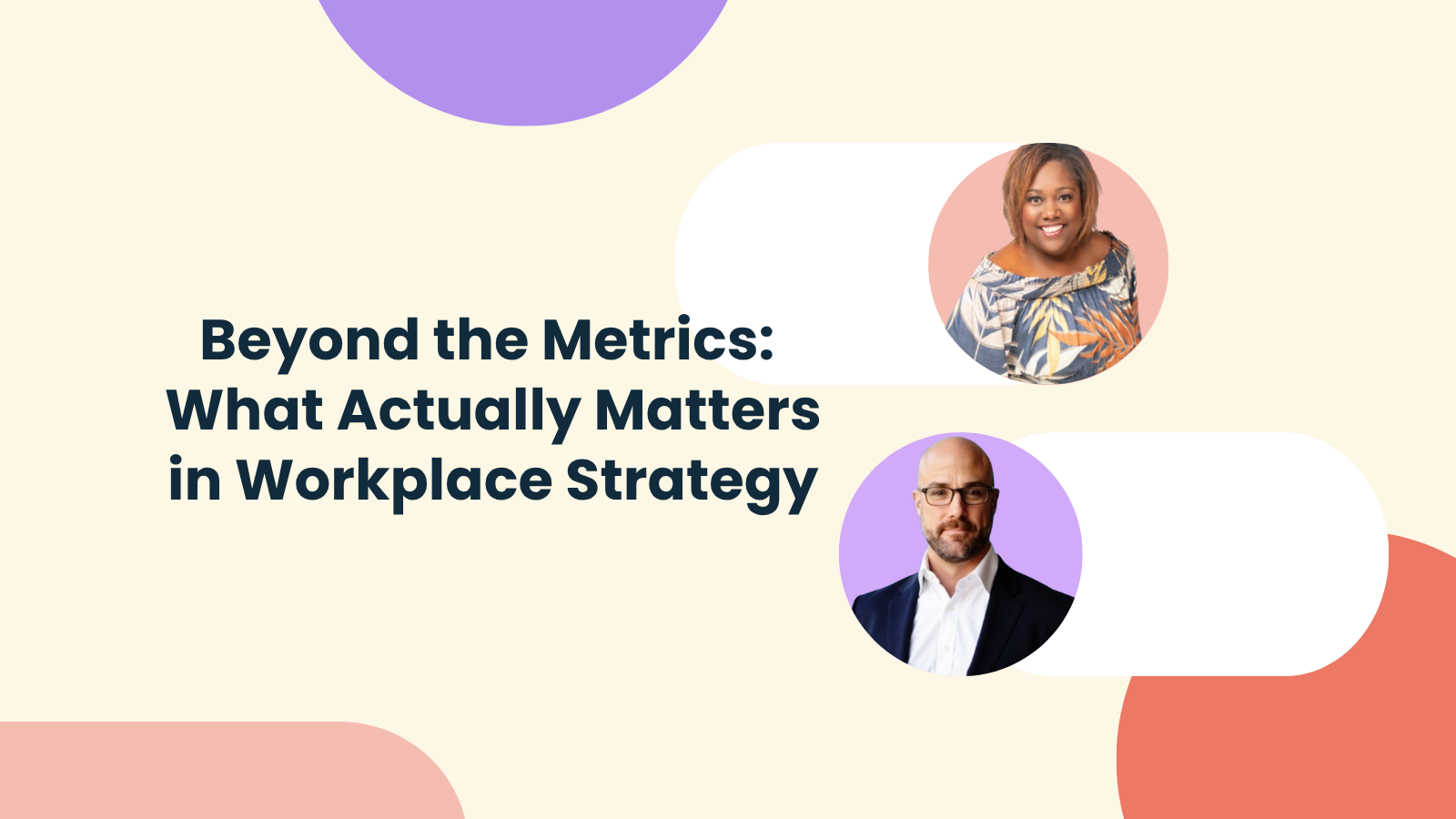When employees walk into the office and everything just works, it's not magic. It's workplace services.
The workplace services market grew from $119.47 billion in 2024 to $130.82 billion in 2025, reflecting the growing importance of these support systems. As hybrid work reshapes how we think about office space, companies are rethinking what it takes to create environments where people actually want to work.
This guide covers all you need to know about workplace services: what they are, why they matter, and how to implement them effectively.
What are workplace services?
Workplace services are the support systems, amenities, and resources that keep your workplace running smoothly. They cover everything from facility and office space management to IT support, wellness programs, and collaboration tools.
Think of workplace services as the invisible infrastructure that either enables your team to do their best work or creates friction at every turn. When done well, these essential services blend into the background. When done poorly, they become the reason employees struggle to be productive.
Office attendance remains roughly 30% lower than it was before the pandemic, which means the role of workplace services has changed. Now, they're about creating purposeful experiences that make coming to the office worthwhile.
The core components of workplace services
Facility management and office services
Facilities managers handle the physical workplace: everything from HVAC systems to desk services. This includes maintaining office space, managing vendors, coordinating repairs when equipment breaks, and ensuring the seamless operations of your office. For hybrid teams, this also includes managing hot desks, conference rooms, and collaboration zones.
Tech and IT support
Your tech infrastructure determines whether employees can actually do their jobs. This covers help desk services, network management, video conferencing setup, collaboration tools, and data security. When people are on-site, they expect the technology to enhance, not hinder, their productivity.
Security services and access control
Security services have evolved to include access control systems, visitor management, data security protocols, and emergency response planning. With hybrid work creating complex attendance patterns, smart security systems need to adapt while maintaining safety standards.
Workplace experience
This is where workplace services shift from functional to experiential. We're talking about healthy food options, ergonomic furniture that supports well-being, wellness programs that address mental health, and spaces designed for various work modes.
Space management and scheduling
Managing hot desks, meeting rooms, and shared spaces requires sophisticated systems to prevent double bookings, track utilization, and ensure fair access. This includes desk booking software, conference room scheduling, smart lockers for storage, and real-time availability tracking.
Companies struggle with an average office utilization rate of just 38%, meaning traditional space allocation models waste significant resources. Smart space management turns this around.

Learn data-driven strategies to optimize conference rooms for productivity and collaboration. Our guide covers layouts, technology, and space analytics for modern teams.
Read the guide
Why workplace services matter for hybrid work
They directly impact employee engagement and retention
According to Gartner research, the pace of employee turnover is forecast to be 50-75% higher than companies experienced pre-pandemic, and it's taking 18% longer to fill roles. In this environment, workplace services become a competitive advantage in attracting and retaining top talent.
When employees feel their needs are met, they're more likely to stay engaged. The alternative? Disengaged workers who view the office as an obstacle rather than an asset.
They improve collaboration and productivity
Office attendance is lower than pre-pandemic, but when employees do come in, they come to collaborate. Your workplace services need to support this shift with conference room setups that accommodate hybrid meetings, interactive whiteboards that facilitate brainstorming, AV equipment that doesn't require a PhD to operate, and booking systems that minimize friction.
>>> Discover proven strategies for optimizing hybrid office spaces to enhance collaboration while reducing costs.
They optimize real estate costs
Smart workplace services help you understand utilization patterns, allowing you to rightsize your office space based on data, not assumptions. The workplace services market is expected to reach $201.02 billion by 2030 at a CAGR of 9.05%, driven largely by organizations seeking to optimize their real estate footprints.
They support employee well-being
Workplace services that prioritize mental health support, wellness programs, and ergonomic workspaces directly address employee isolation, loneliness, and stress.
Companies that demonstrate care for employee well-being see tangible returns; employees who perceive their employer as caring about their well-being are 69% less likely to look for a new job.
Physical workspace design directly impacts productivity. Research shows that 89% of employees report a strong tie between their physical environment and overall performance.
How workplace services enable hybrid and remote work models
The shift to hybrid work hasn't reduced the importance of workplace services; it has increased their complexity. Now you need to support employees across multiple locations while creating equitable experiences.
Digital workplace platforms
Digital workplace services enable seamless collaboration regardless of location. This includes cloud-based document management, virtual meeting platforms, project management tools, and unified communication systems.
Nearly two-thirds of companies say the digital workplace is a critical or high priority, according to Reworked's 2024 State of the Digital Workplace Report.
Flexible workspace access
Traditional long-term leases no longer make sense for many organizations. Instead, companies are turning to flexible solutions that provide employees with access to professional spaces when and where they need them, reducing fixed real estate costs while providing flexibility.
>>> Discover how to create flexible workspace strategies that strike a balance between cost efficiency and employee experience.
Coordination across locations
Managing workplace services across headquarters, satellite offices, and flexible spaces requires centralized systems. Employees need a single platform to book desks, schedule meetings, and access resources, regardless of which location they're using.
Space management platforms provide the visibility and control you need to coordinate services across distributed teams, ensuring consistent experiences everywhere.
Critical considerations for implementing workplace services
Understanding your unique needs
Every organization has different requirements based on industry, company size, work culture, and employee preferences. Start by gathering data on how your team actually works. What percentage of workers work in the office versus remotely? When do people come in, and what do they do in the office?
Balancing in-house versus outsourced services
You'll need to decide which services to manage internally and which to outsource. Most organizations use a hybrid approach.
In-house advantages: Greater control, deep knowledge of company culture, direct communication, and potential long-term cost savings for large organizations.
Outsourcing benefits: Access to specialized expertise, scalability to match changing needs, reduced burden on internal teams, and advanced technology.
The decision depends on your company size, budget, internal capabilities, and how critical each service is to your core business.
Investing in the right technology
Workplace tech solutions should simplify your operations. Look for platforms that integrate with your existing tools, provide real-time data on space utilization, enable self-service booking, scale as your needs change, and offer analytics to inform decisions.
Modern workplaces need modern solutions. Gable Offices helps you optimize space, reduce costs, and create better experiences with real-time booking, analytics, and seamless integrations.
Learn more
Implementing workplace services in 6 steps
Step 1: Assess current state and employee needs
Begin with an honest assessment of your current workplace. Conduct surveys to understand employee preferences and look at utilization data to identify underused and high-demand areas.
Step 2: Define clear objectives
Set specific, measurable goals, like reducing real estate costs by a specific percentage, improving employee satisfaction scores, or increasing office utilization rates.
Step 3: Choose your service delivery model
Based on your assessment, decide which services to manage in-house and which to outsource. Consider launching a pilot program for new services before rolling them out fully.
Step 4: Implement technology
Select and deploy tech platforms that will power an efficient, flexible workplace and empower employees to do their best work. This typically includes space booking systems, visitor management tools, workplace analytics platforms, and communication tools.
Office management software serves as the central nervous system, connecting employees with resources and providing the data needed to improve continuously.
Step 5: Train and communicate
The best workplace services fail if employees don't know how to use them. Invest in comprehensive training and clear communication about what's available and how to access it. Make it easy for employees to provide feedback.
Step 6: Measure and optimize
Track key metrics like space utilization rates, employee satisfaction with services, cost per employee, and booking patterns. Use workplace analytics to connect services to business outcomes and continuously refine your approach.
Common workplace service challenges and solutions
Challenge: Low office utilization
Many organizations are paying for office space that sits empty most of the time, with average utilization rates around 38%.
Solution: Implement flexible workspace strategies and data-driven space planning. Use analytics to understand actual usage patterns, then rightsize your real estate accordingly. Consider shifting to hot desking, where employees choose spaces based on their tasks rather than having assigned desks.
Challenge: Inconsistent employee experience
Employees working across different locations often face wildly different experiences—some offices have modern amenities while others lack basic resources.
Solution: Standardize core workplace services across all locations while allowing for local customization. A centralized platform ensures consistent access to booking, resources, and support regardless of where employees work.
Challenge: Difficulty measuring ROI
Many workplace leaders struggle to quantify the value of their workplace services investments.
Solution: Establish clear metrics from the start. Track both hard costs (real estate spend, service costs) and soft benefits (employee satisfaction, retention rates, collaboration frequency). Use workplace analytics to connect services to business outcomes.
The future of workplace services
AI and automation
Artificial intelligence is transforming workplace services through predictive maintenance, intelligent space allocation based on patterns, automated service requests, and personalized workplace experiences.
Wellness integration
The line between workplace services and employee wellness is blurring. Future workplace services will more deeply integrate mental health resources, fitness and movement options, healthy food and nutrition support, and stress management programs.
Research from Deloitte found that for every £1 spent on supporting the mental health and wellbeing of their workforce, employers get an average of £4.70 back in increased productivity.
Increased flexibility
The future of workplace services is built on flexibility. Employees expect choice in where they work, when they work, and how they work. Workplace services need to support this flexibility while maintaining efficiency and quality.
Key takeaways for workplace leaders
Start with employee needs, not assumptions. Survey your team and analyze actual usage patterns before making decisions about workplace services.
Invest in technology that provides visibility and control. You can't optimize what you can't measure. Workplace analytics are essential for data-driven decisions.
Think holistically about the employee experience. Workplace services aren't isolated offerings—they work together to create an overall experience that either attracts or repels talent.
Plan for flexibility and change. Your workplace strategy will evolve. Choose services and solutions that can adapt rather than locking you into rigid models.
Balance efficiency with experience. Yes, workplace services should optimize costs. But if you optimize so much that employees hate coming to the office, you've defeated the purpose.
Successful companies are rethinking how they support distributed teams. Whether you're managing one office, multiple ones, or flexible workspaces, the right platform makes all the difference.
Get a demo





.svg)





.svg)
















.svg)













